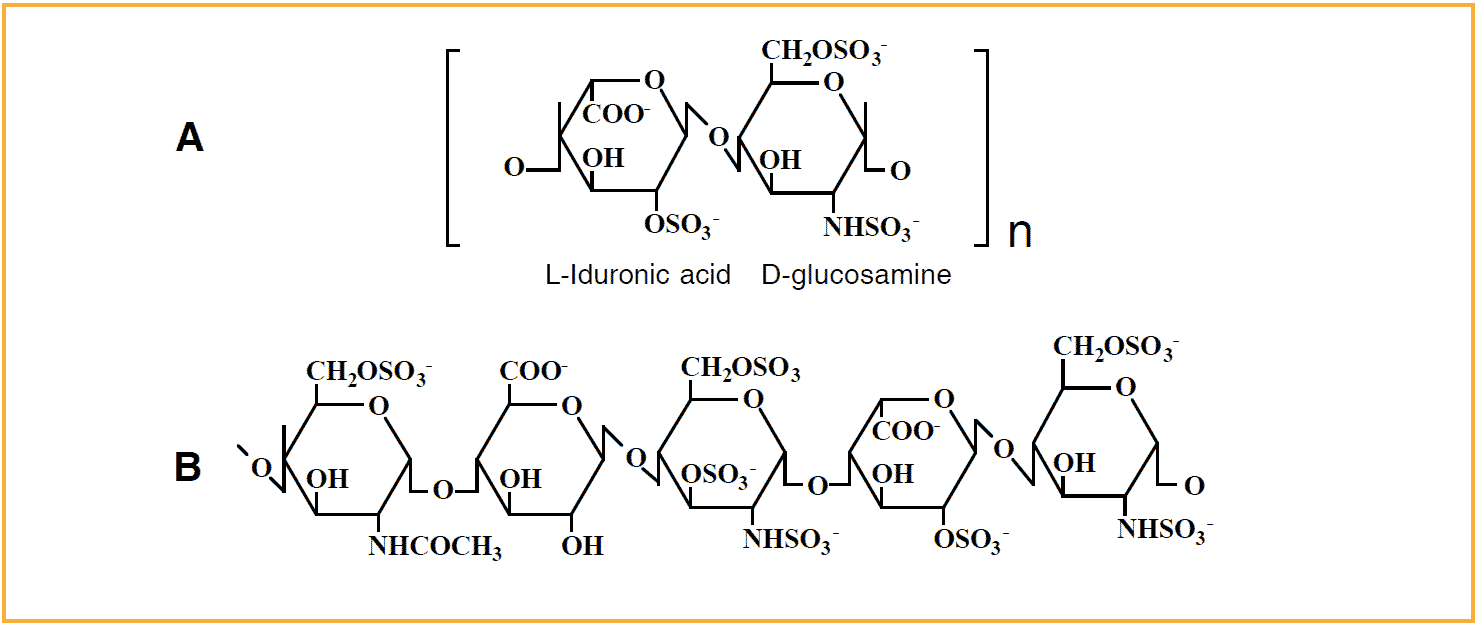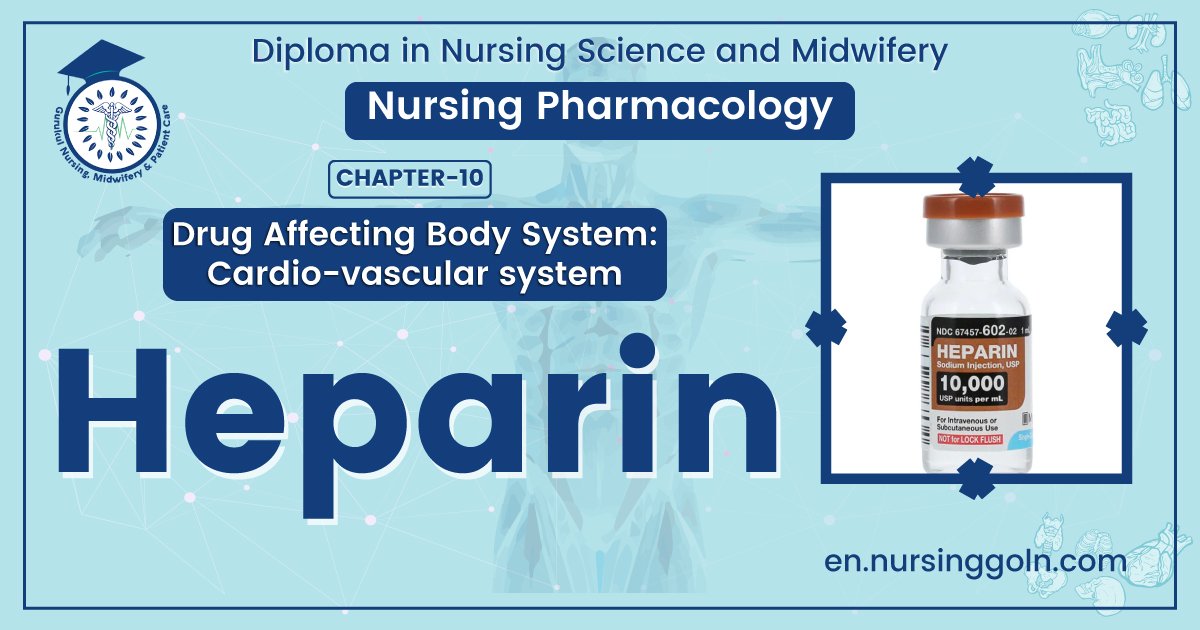Concept About Heparin – This book covers the entire syllabus of “Pharmacology” prescribed by BNMC- for diploma in nursing science & midwifery students. We tried to accommodate the latest information and topics. This book is an examination setup according to the teachers’ lectures and examination questions.
At the end of the book, previous questions are given. We hope in touch with the book students’ knowledge will be upgraded and flourish. The unique way of presentation may make your reading of the book a pleasurable experience.

Concept About Heparin
Injectable antigoagulant
It is a water-soluble mucopollsaccharide. It is so named because of its abundance in the liver.
Chemically: Heparin is a heterogenous mixture of sutphated mucopolysaccharide. Molecular weight varies from 6,000 to 25,000. It is strongly acidic and strong electronegative charged.
Source: Mast cells, basophil, commercially prepared from beef lungs and hog intestinal mucosa. Route of administration
Parenterally: i/v or S/c route. It is not given orally as it is destroyed by amylase.
Mechanism of action of heparin
- Heparin potentiates the action of anti-thrombin III 1000 fold and causes)
- Inhibition of activation of factor ii, vii, ix, x, xi, xii
- Prevents conversion of prothrombin to thrombin.
- Prevents conversion of fibrinogen to fibrin
- Low molecular weight heparin produces an anticoagulant effect mainly through inhibition of Xa by antithrombin-III
Pharmacokinetics of heparin
- Inhibits fibrin formation.
- Decrease platelet aggregation effect by inhibitory effect in prolongs the bleeding time.
- Heparin releases lipoprotein and so decreases blood lipid. with high dose (secondary thrombin i.e. IIa). Thereby lipase from various tissues

Pharmacological actions of heparin
1. Routes of administration: rv, sc (low dose).
2. Oral: not absorbed from the GIT because of electronegative charge of heparin and its large molecular size.
3. I/M: not indicated; causes hematoma formation at the site of injection.
4. Onset of action: immediate (10-18 min. of administration), SC: onset is delayed (20-60 min).
5. Plasma half-life: 40-90 minutes.
6. Metabolism: Liver.
7. Excretion: kidney
Indication of heparin:
➤ Disseminated intravascular coagulation (DIC).
➤ Porphylaxis and treatment of deep vein thrombosis, pulmonary embolism.
➤ Postoperative or after myocardial surgery.
➤ Cardiopulmonary bypass machines.
➤ Thrombophlebitis which develops spontaneously or following surgery, trauma or disease.
➤ To reduce frequency of arterial embolism in patient with atrial fibrillation, mitral stenosis or prosthetic heart valves.
➤ Prevention of clotting during:
- Blood transfusion.
- Hemodialysis.
- Blood lamping for laboratory analysis
Adverse effects of Heparin:
➤ Hypersensitivity reaction:
- Chill
- Fever
- Urticaria
- Anaphylaxis
➤ Transient thrombocytopenia.
➤ Haemorrhage from:
- Ulcer, open wound
- Hematuria, Hemoptysis
- Piles, Epistaxis
- Threatened abortion
➤ Transient alopecia, osteoporosis
➤ Neuropathy. breast necrosis.
➤ Inhibition of aldosterone secretion.
➤Slowing of wound healing.
➤ Depression of cell mediated immunity
Contraindication of Heparin
➤ Patient with hypersensitivity to heparin
➤ Bleeding disorders
- Hemophilia, Purpura
- Thrombocytopenia
- Intracranial hemorrhage
- Ulcerative lesion of GIT
- Visceral carcinoma
- Threatened abortion
- Active tuberculosis

➤Bacterial endocarditis
➤ During and after surgery of brain, eye or spinal cord.
➤Patient undertaking lumber puncture.
➤ Patient undergoing regional anaesthetic block.
Monitoring of heparin therapy:
Heparin therapy should be monitored by testing blood partial thromboplastin time with kaolin (prrx). The PTTK should be increases 2.5-3.5 times that of the control value with heparin therapy. If PTTK exceeds more than 2.5..3.5 times then there will be bleeding spontaneously. PTTK should measure between doses.
Treatment of heparin overdose
- Immediate withdrawal of therapy.
- Administration of heparin antagonists: Protamine sulphate.
For every 100 units of heparin remaining in the patient, administer I mg protamine sulphate intravenously.
Read more:
